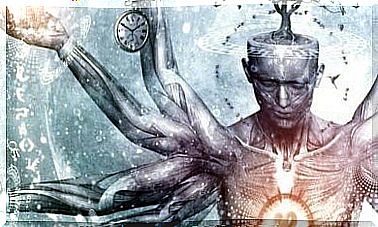The Characters Of Greek Mythology Tell Us About Risk

Following this idea, Klinke and Renn illustrated six classes of risk with figures from Greek mythology from the years 700-500 BC. JC.
These mythological figures represent the burning desire of the human being to “create the future” instead of being exposed to the fate of chance and circumstances. Six different risk classes stand out: Damocles, Cyclops, Pythia, Pandora, Cassandra and Medusa. These risks are differentiated by their probability of occurrence, by the damage they can cause and by what we know about them. Let’s go through them one by one.
Damocles
Damocles is an important figure in Greek mythology. He was one of the courtiers of Dionysus. He thought his king was lucky to have so much power and wealth, which made him envious and worship him. To try to teach him a lesson, Dionysus offered to exchange their roles for a day.
That same day, a banquet was celebrated. Damocles took great pleasure in being treated like a king. However, at the end of the meal, he noticed that a sword was hanging over his head and was held only by horsehair. He then lost all desire for luxury and great meals and told Dionysus that he wanted to give up this post.
This myth illustrates the insecurity of those with great power. Not only can they lose it, but not only that: their life is also at stake. This type of danger is the one that exists in times of prosperity. Its main characteristics are a low probability of occurrence and a large magnitude of potential damage. We find a few examples of this risk in nuclear energy or the impact of meteorites. These risks are unlikely to materialize, but if they did, the damage would be very serious.

Cyclops
Cyclops are a species of giants who have only one eye in the middle of their forehead. Since they have reduced vision, so too is their perception of reality. This type of risk cannot be estimated correctly. We do not know its probability of occurrence, but its potential damage is catastrophic.
In this category of risks, we find earthquakes and volcanic eruptions, as well as the use of weapons of mass destruction. We can’t know exactly if or when they are going to happen. Their damage, however, is going to be immense.
Pythia
When the Greeks wanted to know the future, they consulted their oracles. One of the most important was the Oracle of Delphi, whose megaphone was the priestess Pythia. This priestess was poisoning herself with gas to make predictions and warn people of their future. However, much to the chagrin of those who consulted her, her prophecies were still ambiguous.
The type of risks represented by this story correspond to those for which we do not know the magnitude of damage or the probability of occurrence. We find an example of this in sudden climatic changes or exposure to chemical or biological substances. These risks, like others that would be linked to technology or derive from genetic engineering, are difficult to estimate.
Pandora
One of the most controversial figures in Greek mythology is Pandora. It was created by the gods as a form of punishment after Prometheus stole the fire from them to offer it to mankind. Pandora was so beautiful that no one could resist her. Neither gods nor humans. The gods of Olympus therefore gave him their most beautiful attributes, among which was that of curiosity. This pushed her to open the box which contained all the evils in the world.
This risk tells us that small actions can cause big disasters. Normally, these risks are discovered when it is already too late, like those caused with the environment. The characteristics of this type of risk are their high spread, their persistence over time and their irreversibility. We find for example chlorofluorocarbons. At first, they were considered harmless but, over time, we could see that they destroy the ozone layer.
Cassandra
Cassandra was a cursed seer from Troy. His curse was that no one would ever believe his predictions. She was the one who predicted the fall of Troy against the Greeks, but her compatriots did not take her seriously. Now, as we know, the Greeks got out of the famous wooden horse and destroyed the city.
This story corresponds to events for which we know the probability of occurrence and the magnitude of damage. However, since there is a delay between the cause and the consequences, the risk is ignored or looked down upon. On the other hand, risks of this type have a high probability of occurrence and high potential damage. For example, we can think of climate change and the loss of biological diversity.

Astonished
The last character from Greek mythology that we are going to talk about is Medusa. She was one of the three Gorgon sisters, the only mortal of the three. No one dared to approach her because it was said that only her gaze could petrify those who would meet her.
The type of risk associated with this myth is one that is dismissed when it is harmless. The risk seems very high, but there is no evidence to indicate that this is really the case. Take electromagnetic fields as an example. Their potential damage is low, but people think they will be affected.
As we have seen, the different risks can be interpreted through these analogies with characters from Greek mythology. However, the most important thing is not to make comparisons but to know what type of risk corresponds to each of these categories. The point is that they do not result in potential damage.










